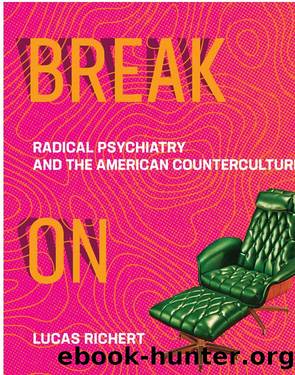Break On Through by Lucas Richert;

Author:Lucas Richert; [Неизв.]
Language: eng
Format: epub
Publisher: MIT Press
In seeking to answer these grandiose questions and develop a fuller knowledge of the mental health ecosystem, the subsequent reports and deliberations demonstrated that the commissionâs members were dealing with amazingly complex issues. The problems emerged from a global mental health agenda, a domestic rights revolution, and the involvement of multiple interest groups, including remnants of the radical psychiatrists and psychiatric survivors. By early 1978 the commissionâs separate panels had completed their work, and their reports filled 2,140 pages in three large volumes. Their statements were far from compatible, representing a âmultiplicity of voices,â and were clearly agenda-driven. Overall, it was debatable whether any group, professional or lay, could assess the contradictory recommendations of the two dozen individual mental health panels and then fashion an intelligible final report. But an effort was made.77
The commission was instructed to produce a final report by April 1978. The result was a hodgepodge. Carter called it a âsuperb analysis of the problems that we still have in the adequate delivery of mental health care to the people of our country.â He praised the report for not calling for major spending increases and acknowledged the trouble in bringing together âwidely and disparate groups . . . interested in mental illness of all kinds.â78 Carter agreed with the reportâs recommendations that federal policy ought to inspire mental health specialists to work in underserved areas, increase the number of minority personnel, and ensure that the skills and knowledge of such personnel were suitable for the needs of those they served.
In calling for reform in both the public and private financing of mental health services, the report dealt with legal and human rights. How could it not? In light of the social upheaval of the 1960s and 1970s, this subject, the rights revolution, was inescapable. Concern with race, ethnicity, and gender issues permeated the document. The mental health of children was emphasized, as was a greater understanding of âthe nature of social environments.â As part of this general orientation, the commission supported a series of actions to better represent mentally disabled individuals, eliminate discrimination, and ensure that the states reviewed their civil commitment and guardianship laws. In addition, it affirmed the right to treatment in the least restrictive setting, rehabilitation, and protection from harm. The report advanced more than one hundred other recommendations, prompting critics to charge it was so broad and so inclusive as to be meaningless. In seeking consensus, or the much sought-after middle ground, the report offered something for everyone, the optics of which were far from ideal. At best, it seemed a dithering effort difficult to translate into a tangible piece of legislation; at worst, it came off as hollow political posturing and a waste of time and resources.
Creating legislation proved difficult. Years later, though, the spirit of the report could be found in the provisions of the Mental Health Systems Act of 1980. The act reaffirmed the priority of community mental health services, particularly for such underserved groups as individuals with chronic mental
Download
This site does not store any files on its server. We only index and link to content provided by other sites. Please contact the content providers to delete copyright contents if any and email us, we'll remove relevant links or contents immediately.
Spare by Prince Harry The Duke of Sussex(4188)
Machine Learning at Scale with H2O by Gregory Keys | David Whiting(2263)
Fairy Tale by Stephen King(2058)
Will by Will Smith(2031)
Hooked: A Dark, Contemporary Romance (Never After Series) by Emily McIntire(1932)
Rationality by Steven Pinker(1759)
The Bullet Journal Method by Ryder Carroll(1493)
The Becoming by Nora Roberts(1323)
Friends, Lovers, and the Big Terrible Thing by Matthew Perry(1320)
A Short History of War by Jeremy Black(1295)
HBR's 10 Must Reads 2022 by Harvard Business Review(1251)
The Strength In Our Scars by Bianca Sparacino(1233)
Can't Hurt Me: Master Your Mind and Defy the Odds - Clean Edition by David Goggins(1218)
515945210 by Unknown(1205)
Fear No Evil by James Patterson(1103)
Love on the Brain by Ali Hazelwood(1088)
This Family Does It by Kevin Sellers(1079)
Bewilderment by Richard Powers(1077)
443319537 by Unknown(1069)
